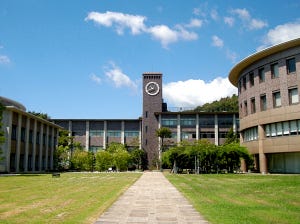Globalizing Higher Education in Japan

Please note: This is a response to the article "The Challenges to Internationalizing Japanese Higher Education" published by Robert Dujarric on December 19, 2014, in Asian Pathways.
Japan's current higher education system does, indeed, work well, as Robert Dujarric argued, but only as long as Japan does not deem it necessary to globalize overall. The author of the article seems to be relying on the good old Japanese principle of jikyū jisoku (self-sufficiency), but I don’t truly think that anyone in Japan today is still relying on that principle hoping it would work in a major global crisis situation.
No, on the contrary, I dare argue, there is not enough kikikan (sense of crisis/urgency) in Japanese higher education today, and the government is in fact right to push for massive imports of foreign students (not unlike a lot of other universities in Europe and the United States–the challenge of attracting more international students has been widely and publicly debated in the United Kingdom in 2013, and even major Ivy League schools in the United States are re-organizing their global engagement and global recruitment efforts). Not only Japan's indigenous college student population is bound to dwindle down even further with the continuous negative population growth that the Japanese society has been experiencing for the past 2 decades, but having that population looking more and more inward than expanding outward cannot possible bode well for Japanese companies trying to stay ahead in an increasingly fierce global competition.
Of course, the problems with the rapid globalization of Japan’s higher education are, as Robert Dujarric pointed out in his article, not easy to overcome. They do arise, however, not from Japan’s centralized system but, paradoxically, from the less visible ruptures within, such as those between decision-making factors inside the universities themselves. While offices have been set in place in most of the universities designated as Super-Global by the Abe government at the beginning of 2014, they face a fierce opposition from departments and faculty members in their efforts to recruit more foreign students. That is the most important difference between the opening and "globalization" that took place in Japan immediately following the Meiji Restoration in the second half of 19th century (invoked by the author) and the situation we experience today: the spirit of common effort for the better good is all but gone in Japan. Combined with the crippling requirement for rather unreasonable levels of Japanese language expected from foreign applicants (English-only undergraduate programs are, as Robert Dujarric showed, rather scarce and definitely academically not-aligned with counterparts from abroad), it is no wonder that most Super-Global universities in Japan cannot recruit more than 12-15 international applicants per year… But, that is another, longer discussion.
(An article published originally on LinkedIn.)


